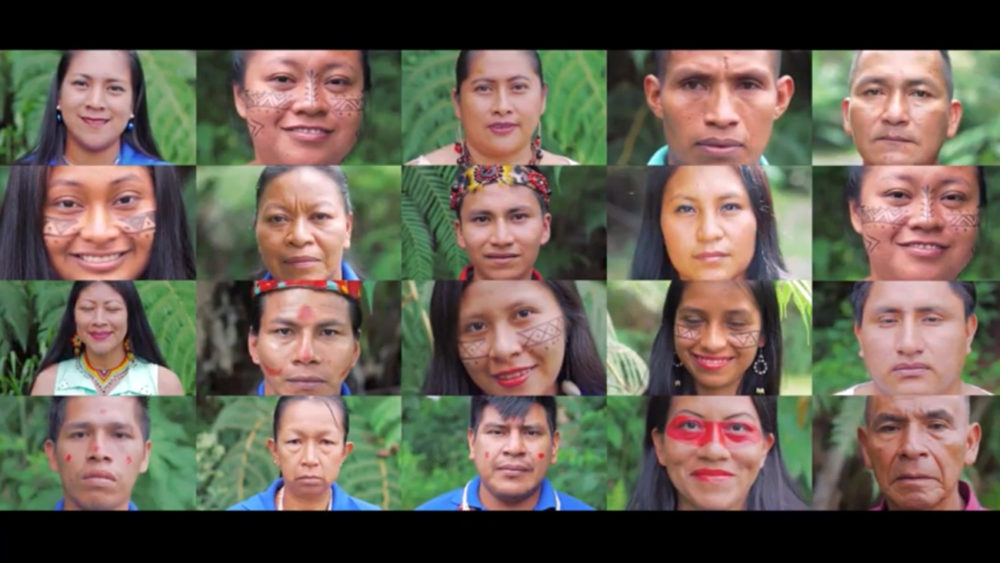PROAmazonía, a national government program with the support of UNDP, works in the country’s six Amazonian provinces to promote the sustainable development of their inhabitants, developing actions aimed at preserving the ancestral knowledge of indigenous peoples and nationalities and making their contribution to the conservation of forests and biodiversity more visible. Similarly, capacity building seeks to revalue and protect cultural diversity for the benefit of future generations.
For this reason, and within the framework of the projects implemented by PROAmazonía, a training workshop is being implemented in virtual and face-to-face mode on one of the five areas of Intangible Cultural Heritage (ICH) referring to “knowledge and uses related to nature”; through the approach of Ancestral Knowledge and Intellectual Property.
The objective of these actions is to strengthen the capacities of program staff and strategic partners (Ministries of Environment, Water and Ecological Transition, Agriculture and Livestock, strategic partners and indigenous communities in the six Amazonian provinces) in intellectual property and ancestral knowledge; and to socialize the different instruments for the voluntary registration of traditional knowledge and prepare a road map for the registration of at least three ancestral knowledge by indigenous communities, related to the management of the program.
Worldwide, enormous efforts have been made to conceptualize, record and protect Intangible Cultural Heritage (ICH), and to understand its importance in maintaining cultural diversity and ensuring the sustainable development of peoples. Indeed, the Convention for the Safeguarding of the Intangible Cultural Heritage of the United Nations Educational, Scientific and Cultural Organization (UNESCO, 2003) defines ICH as “the practices, representations, expressions, knowledge, skills and techniques, together with the instruments, objects, artifacts and cultural spaces associated with them (…).”
Following the agreements of the Convention, the Committee defines each year the list of ICHs worldwide. It is currently composed of 535 elements inscribed in five areas [1] identified by the Convention (UNESCO, 2021). However, the importance of ICH goes beyond its definition, since this type of heritage incorporates the traditions inherited from the past, the rural and urban contemporary uses characteristic of diverse cultural groups; on the other hand, ICH has been transmitted from generation to generation, which means that it is in permanent change and responds to the characteristics of the environment, giving those who practice it a sense of identity and, at the same time, a link with their natural environment (UNESCO, 2011). These characteristics link it closely to the concept of sustainable development and its 17 objectives promoted by the United Nations.
In the case of Ecuador, the National Institute of Cultural Heritage has registered 19 cultural manifestations as part of the ICH. In addition, the National Service of Intellectual Rights (SENADI) initiated in 2020 the possibility for peoples, communities, indigenous nationalities, Afro-Ecuadorian and Montubio peoples of Ecuador to voluntarily register their traditional knowledge, in compliance with the rights of indigenous peoples and as a mechanism to safeguard their ICH.
Despite the importance of the ICH (intangible cultural heritage) for the sustainable development of the peoples, the need to strengthen the capacities of the technical team and the communities that hold the ancestral knowledge has been identified. The purpose of this is to better understand the mechanisms for identifying and safeguarding traditional knowledge, the tools that allow for a participatory process to reach agreements on the management of traditional knowledge, and the identification of key institutional actors in this process.




Photographs: PROAmazonía Audiovisual Archive
Description: The producer Ana Salazar of the Inti Association, weaves with natural fibers of the lizan plant an “Ashanga” or basket, this practice is part of the traditions of the Kichwa families of the Napo province, who orally transmit the knowledge to the new generations about the elaboration of this element that is part of their daily life.
The PROAmazonía program reiterates its commitment to disseminate the importance and promotion of issues related to ancestral knowledge, as one of the areas of the Intangible Cultural Heritage of Humanity, which is linked to the United Nations Sustainable Development Goals 2030. Undoubtedly, capacity building in this area is an action that seeks to safeguard respect for the rights of indigenous peoples and nationalities, their traditional knowledge and the protection of their cultural diversity.
[1] The five areas identified as ICH manifestations are: (a) oral traditions and expressions, including language as a vehicle of intangible cultural heritage; (b) performing arts; (c) social practices, rituals and festive events; (d) knowledge and practices related to nature and the universe; (e) traditional craftsmanship (Art. 2 of the Convention, UNESCO, 2003, Available at: https://ich.unesco.org/doc/src/01852-ES.pdf
Sources:
- UNESCO. (2003). Convention for the Safeguarding of the Intangible Cultural Heritage. (p. 12). Paris: UNESCO.
- UNESCO. (2011). What is cultural heritage? UNESCO.
- UNESCO. (August 2, 2021). Searching the Living Heritage. Obtained from areas of the Convention: https://ich.unesco.org/es/explora&display=domain#tabs
Links of interest:
- Cultural Heritage and its connection to Biomes and Natural Resources https://ich.unesco.org/es/explora&display=biome#tabs
- Cultural heritage and the areas of the Convention on Ancestral Knowledge https://ich.unesco.org/es/explora&display=domain#tabs
Author: Lucy Lasso – Technician in Consultation and Interculturality of PROAmazonía
 Español
Español English
English

Comments are closed.